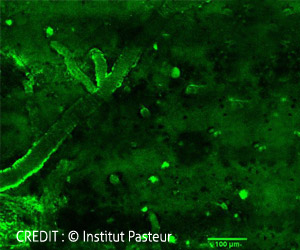- A research team from Columbia University Medical Centre has found that accumulation of tau protein in grid cells leads to cognitive decline among Alzheimer’s patients.
- The reduction in spatial cognition could lead to wandering among Alzheimer’s patients
- This could lead to a potential new target for diagnosing and developing drug therapy for Alzheimer’s Disease.
Alzheimer’s Patients’ Wander
One of the major concerns regarding Alzheimer’s is that three out of five people wander and are unable to find their way back. This behavior is generally identified during the early stages of the disease and increases the risk of injury.The problems are suspected to originate in the entorhinal cortex of the brain and this region is associated with memory and navigation. This region of the brain is the primary brain structure which contains a large amount of tau protein and is associated with a build-up of neurofibrillary tangles.
Dr. Karen Duff who is a professor of pathology and a co-study leader said that no one has been able to show until now how the increase in tau may affect the ability of the patients to navigate.
Experiments on Excitatory Grid Cell
The research team lead by Dr. Duff worked on understanding the excitatory grid cells, which are a type of nerve cells in the entorhinal cortex that provides a response to movement through space. This results in a grid-like map of the environment of the person.The study involved electrophysiological recordings of the grid cells in mice that were genetically altered to express tau in the entorhinal cortex as well as in normal mice. The mice were made to move around in the environment.
- Among mice which expressed tau, special cognitive tasks were performed worse than normal mice.
- This suggested that tau protein affects the functions of the grid cells
- The significance of the grid cells in spatial learning as well as in memory was identified.
- On performing a detailed histopathology of the mouse brains, it was found that the excitatory cells were killed or lowered in efficiency due to tau, without any effect on the inhibitory cells. Dr. Hongjun who is an associate research scientist in the Taub Institute, said, "It appears that Tau pathology spared the inhibitory cells, disturbing the balance between excitatory and inhibitory cells and misaligning the animals' grid fields."
First Study to Show Link Between Grid Cells and Alzheimer’s Disease
Nobel Laureate, Dr. Edvard E. Moser who is the Head of the Kavli Institute for Systems Neuroscience, said, "This study is the first to show a link between grid cells and Alzheimer's disease. These findings will be crucial for future attempts to understand the development of early Alzheimer's disease symptoms, including the tendency to wander and get lost."- Deep-brain stimulation
- Light-based therapy
- Transcranial stimulation
Dr. Duff stated, "In the meantime, our findings suggest that it may be possible to develop navigation-based cognitive tests for diagnosing Alzheimer's disease in its initial stages. And if we can diagnose the disease early, we can start to give therapeutics earlier, when they may have a greater impact."
6 out of 10 People with Alzheimer’s Wander
A person suffering from Alzheimer's disease may become disoriented, forget names and address even in places that were familiar. Though this can be dangerous, there are strategies that are required to prevent it.People at Risk of Wandering
People with memory problems, even early stages of dementia, are at risk of becoming disoriented and confused.- Talks about going home when at home
- Returns from a walk much later than usual
- Tries to complete tasks that were over a long time ago
- Seems restless
- Asks about friends past friends or family and their whereabouts
References:
- Karen E. Duff et al. Tau Pathology Induces Excitatory Neuron Loss, Grid Cell Dysfunction and Spatial Memory Deficits Reminiscent of Early Alzheimer's Disease. Neuron, January (2017) DOI: 10.1016/j.neuron.2016.12.023
- Wandering and Getting Lost - (http://www.alz.org/care/alzheimers-dementia-wandering.asp)
Source-Medindia
















